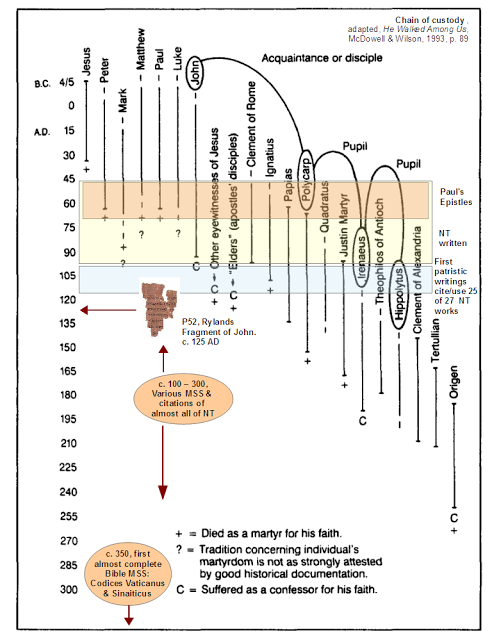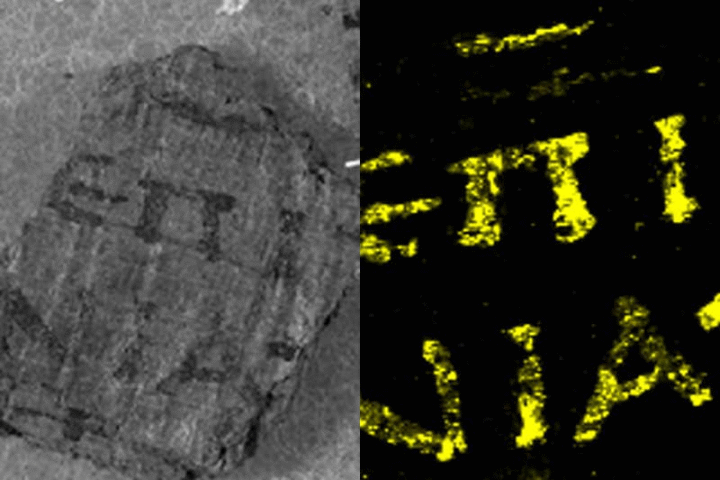News has posted on this recent technological development. It is worth taking a couple of minutes to watch the video describing and imaging what was done using AI technologies:
Fascinating, what 3-d scanning can do. It also of course corroborates the known result from the main Dead Sea Scroll finds, that the OT text was faithfully transmitted to posterity from remote times. END
PS: Chain of custody for the NT message and by extension its texts:

PPS: HT NewScientist, a case of Lead-based ink pigment detected in a papyrus manuscript written in Greek uncials:
